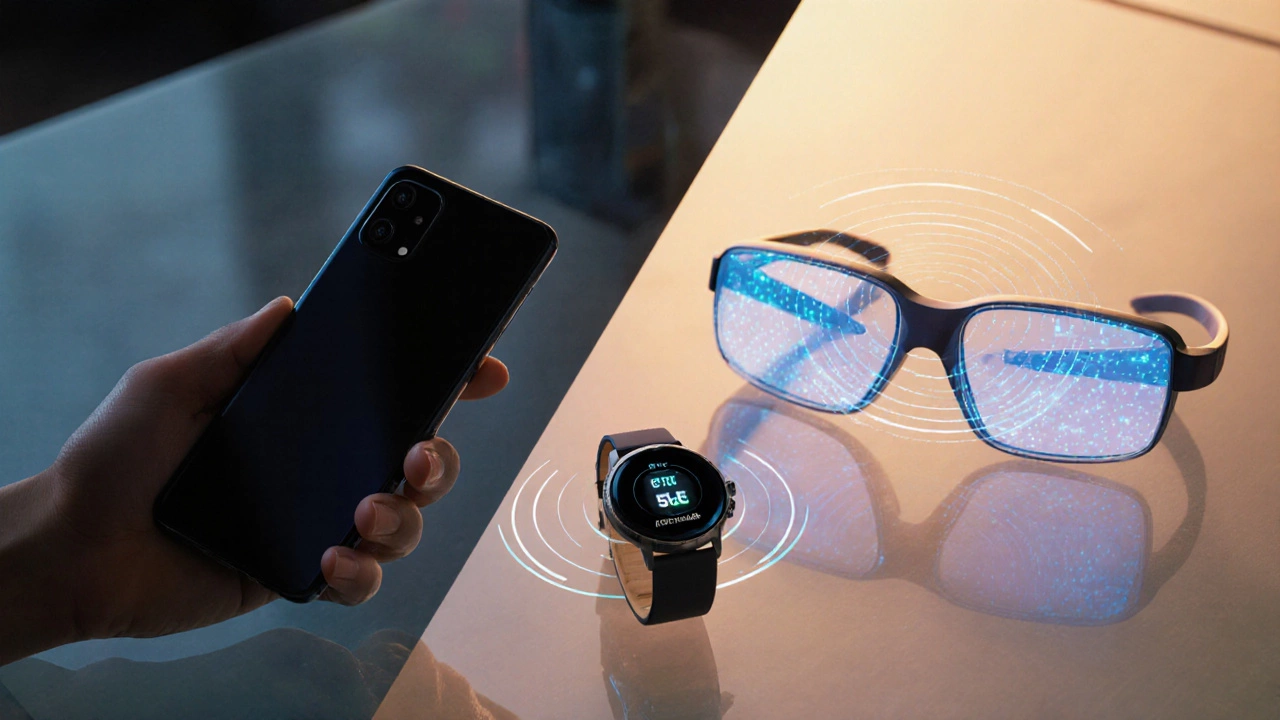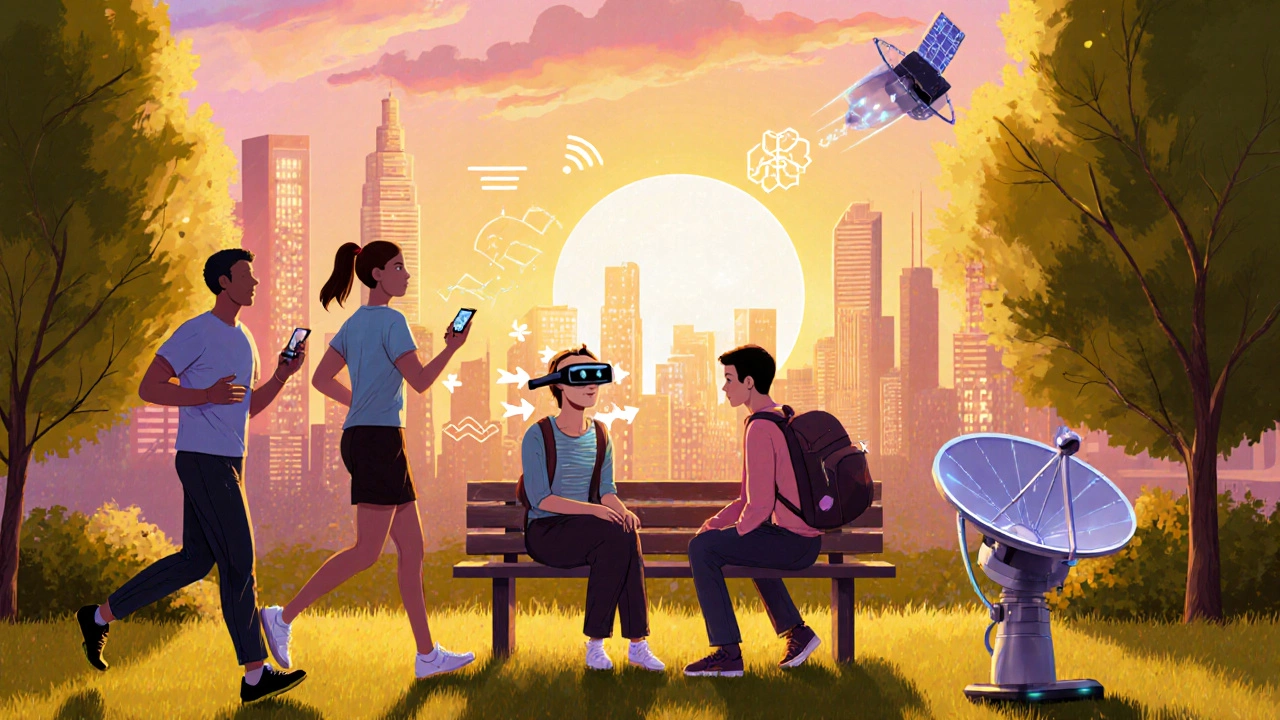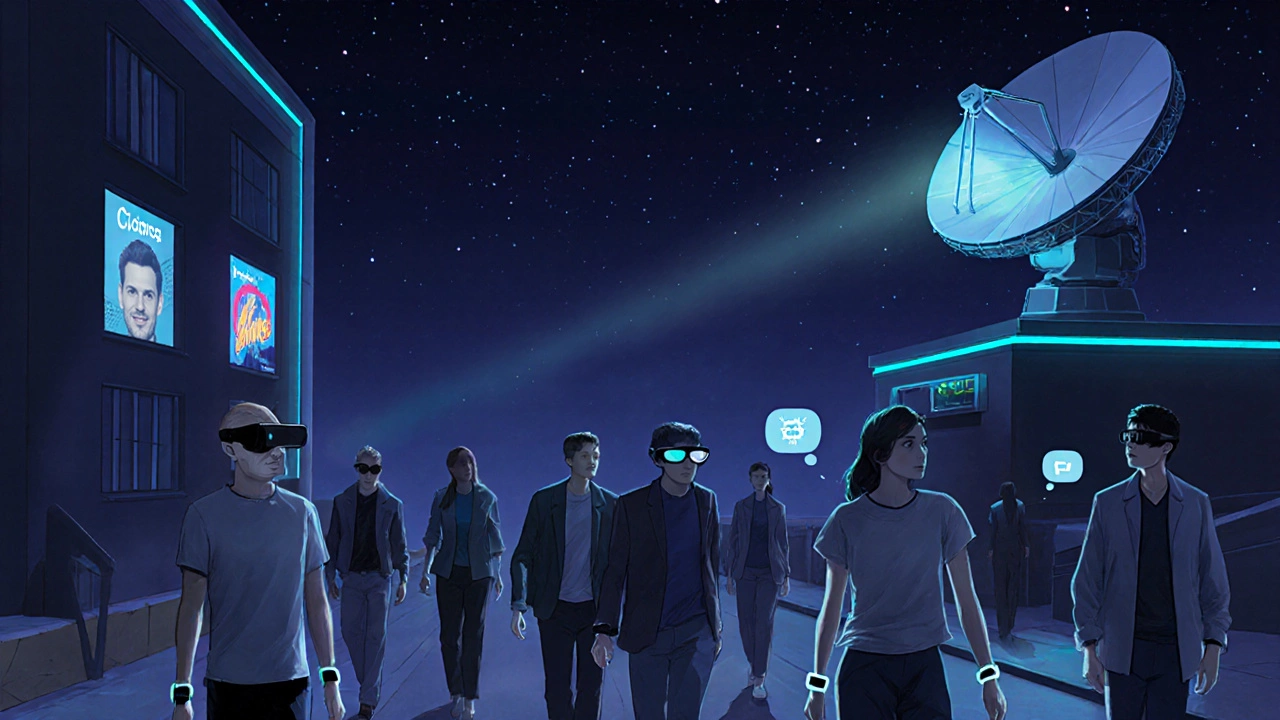
Ever wonder when the device you always reach for will finally disappear? The short answer is: no one knows the exact year, but the forces shaping the market are already in motion. Below we break down the trends, the tech that could take over, and realistic timelines so you can see whether cell phone obsolescence is a distant sci‑fi idea or an inevitable shift.
Why the Traditional Cell Phone Is Under Pressure
The classic cell phone - a handheld unit that marries voice, text, and data - has been the main portal to the digital world for over three decades. Yet several pressures are converging:
- 5G networks are delivering gigabit‑speed connectivity, making large‑screen devices and constant streaming feel natural, which pushes manufacturers to embed more functionality into wearables.
- Battery chemistry improvements are slowing down; squeezing extra hours out of a pocket‑sized battery is getting harder, while larger screens waste more power.
- Consumer habits are evolving - people now glance at their wrists or eyes first, not their pockets.
These forces aren’t new, but their combined effect hints at a future where the hand‑held form factor might no longer be the default.
Emerging Alternatives That Could Replace the Cell Phone
Four main categories are already showing promise as potential successors:
Smartwatches are wrist‑worn devices that integrate cellular, Bluetooth, and internet capabilities, allowing calls, messages, and apps without needing a phone in the pocket. Modern models boast LTE, health sensors, and always‑on displays.
Augmented reality (AR) glasses are head‑mounted displays that overlay digital information onto the real world, turning your field of vision into an interactive interface. Early adopters already use them for navigation, translations, and even video calls.
Brain‑computer interfaces (BCI) are systems that translate neural signals into digital commands, potentially allowing you to send a message or place a call just by thinking. While still experimental, companies like Neuralink are accelerating development.
Satellite internet devices are compact terminals that connect directly to low‑earth‑orbit satellites, providing global coverage independent of terrestrial cell towers. They could enable true everywhere‑online experiences without relying on dense cellular infrastructure.
Timeline: When Might Each Alternative Take Over?
- 2025‑2030 - The smartwatch surge: By 2027, over 60% of smartphone users in North America will also own an LTE‑enabled smartwatch, according to a 2024 market analysis. Many will start using the watch as the primary communication device, especially for quick interactions.
- 2030‑2040 - AR glasses become mainstream: As display technology drops below $150 and battery life reaches a full day, AR glasses are projected to capture 30% of the mobile market share by 2035. Their hands‑free nature will appeal to professionals and gamers alike.
- 2040‑2050 - Brain‑computer interfaces enter daily life: Early clinical trials suggest safe, non‑invasive BCIs could be commercial by 2042. If adoption mirrors early smartphones, a decade later they could dominate core communication tasks.
These dates are estimates, but they illustrate a gradual hand‑off rather than a sudden disappearance.

Key Drivers Behind the Shift
Understanding the forces that could push each technology forward helps gauge the timeline more accurately.
- 6G is expected to deliver terabit‑per‑second speeds and ultra‑low latency, making cloud‑rendered AR experiences feasible on lightweight hardware.
- Advances in AI assistants are allowing voice and gesture control to feel natural, reducing the need for a screen.
- The Internet of Things ecosystem is connecting everything from fridges to streetlights, meaning many tasks no longer need a phone as a hub.
- Regulatory pressure on spectrum allocation could make dedicated cellular bands scarcer, incentivizing operators to push alternative access methods.
Real‑World Pilots That Hint at the Future
Several high‑profile projects are already testing the concept of a phone‑free world:
- Apple’s Vision Pro (2024) lets users take calls, send texts, and browse the web entirely through eye‑tracking and hand gestures.
- Samsung’s Galaxy Watch5 series includes a Phone‑less Mode that routes all communications through the watch’s LTE module.
- SpaceX’s Starlink mobile terminals are being trialed for emergency services in remote areas, showing that satellite backhaul can replace cell towers for critical voice and data.
- Neuralink’s MVP (Minimum Viable Product) demonstrated a fully functional text‑messaging BCI prototype in 2025, sparking discussions about mind‑to‑mind communication.
What This Means for Consumers
When the shift finally lands, you’ll notice a few tangible changes:
- Fewer bulky phones in pockets; instead, you’ll likely see a thin band on your wrist or sleek glasses on your face.
- Battery anxiety will drop because wearables can be charged daily and often have lower power draw.
- Privacy concerns may rise, especially with BCIs that interpret neural data.
- Cost structures will evolve - you might pay a subscription for continuous brain‑signal processing rather than a one‑off device price.

How to Prepare Yourself for the Change
Even if the full transition is years away, you can position yourself to benefit:
- Start using a smartwatch with cellular capability as a secondary device; notice how many tasks you can complete without reaching for your phone.
- Follow AR hardware releases and try demo units at tech stores - early familiarity reduces the learning curve later.
- Keep an eye on satellite internet plans; they may become essential for truly global connectivity.
- Stay informed about BCI research and ethics - being aware helps you make informed decisions when the tech becomes consumer‑ready.
Comparison of Current and Emerging Mobile Platforms
| Device | Typical Price (USD) | Network Dependency | Battery Life (hours) | Primary Interaction Mode |
|---|---|---|---|---|
| Cell Phone | 300‑1200 | Cellular (4G/5G) | 24‑48 | Touch & Voice |
| Smartwatch | 200‑500 | Cellular (LTE/5G) or Bluetooth | 48‑72 | Touch, Voice, Wearable Sensors |
| AR Glasses | 400‑1500 | Wi‑Fi, 5G, future 6G | 6‑12 | Eye‑tracking, Gesture |
| BCI (Non‑invasive) | 1500‑3000 (early adopters) | Wi‑Fi, 6G | Variable (depends on headset) | Thought‑based commands |
Frequently Asked Questions
Will cell phones disappear completely?
Most experts agree that phones will not vanish overnight. Instead, they will shrink in market share as wearables, AR glasses, and BCIs take over many functions. Specialized phones may still exist for niche needs, such as rugged field work.
What year is most likely for the first mainstream BCI device?
Current roadmaps from leading neuro‑tech firms point to 2042 as a realistic launch date for a consumer‑grade, non‑invasive BCI that can handle messaging and simple calls.
Are AR glasses ready for everyday use?
Early models like the Vision Pro are powerful but pricey and have limited battery life. By the late 2030s, price drops and improved power efficiency should make them comfortable for daily wear.
How will battery technology influence this transition?
Solid‑state batteries and graphene‑based cells are projected to double energy density by 2035. This breakthrough will make ultra‑thin wearables viable, accelerating the move away from bulkier phones.
Should I invest in a smartwatch now?
If you already own a phone, adding a cellular smartwatch can future‑proof your communication habits. Look for models that support independent LTE/5G to get a taste of phone‑free usage.